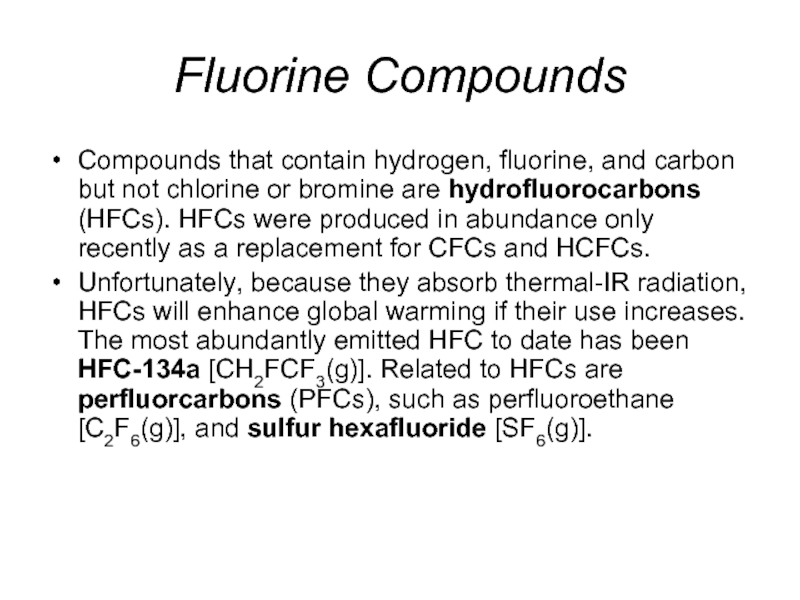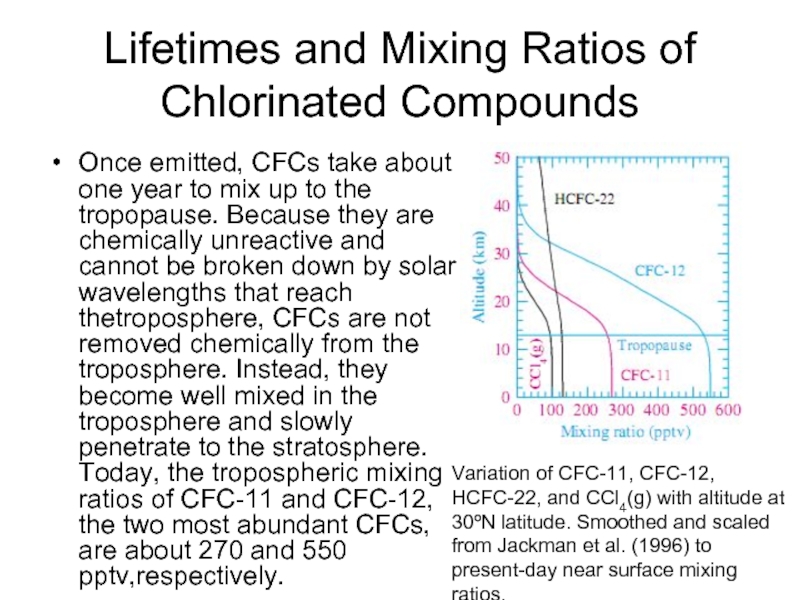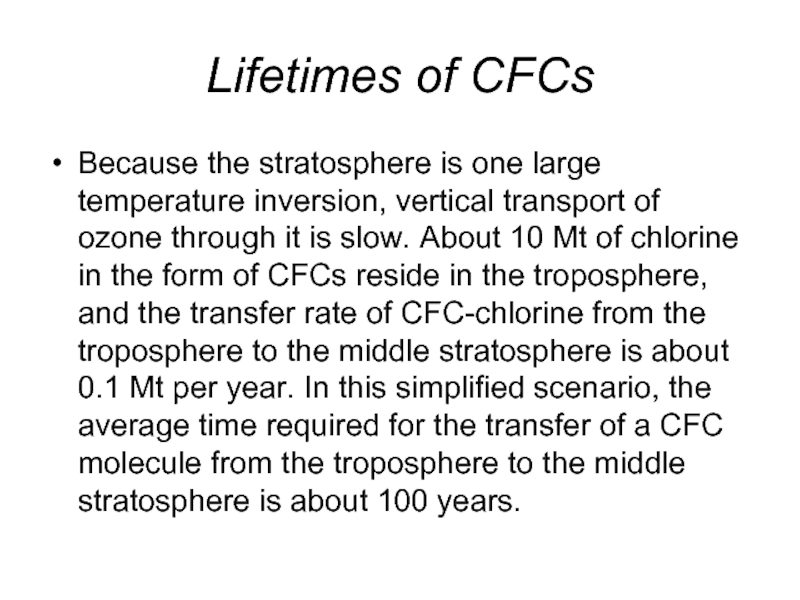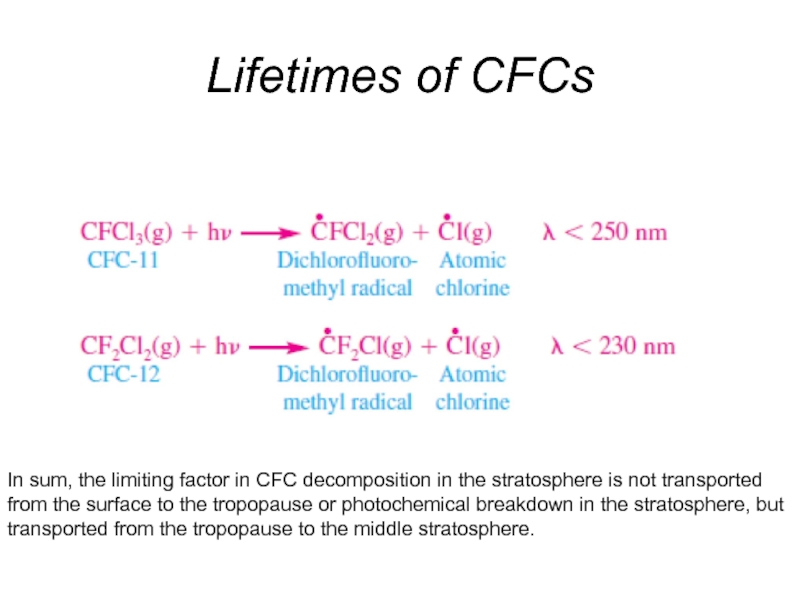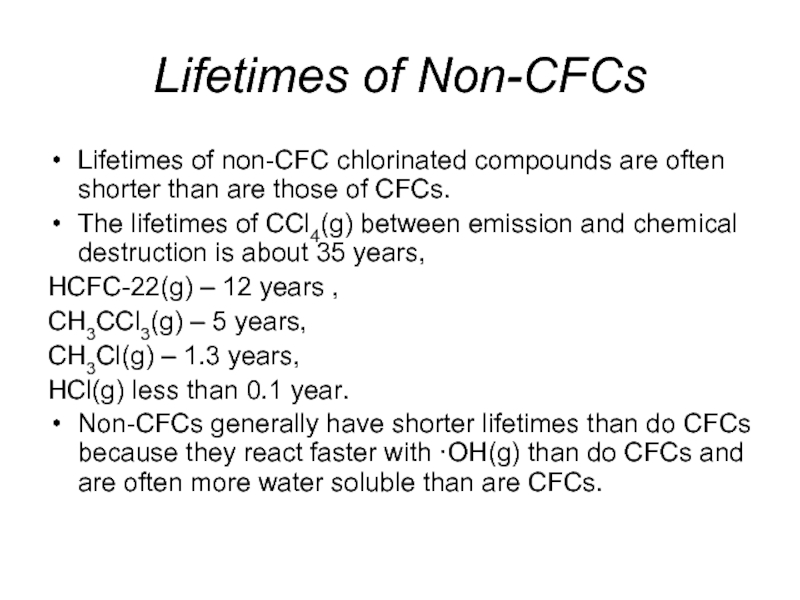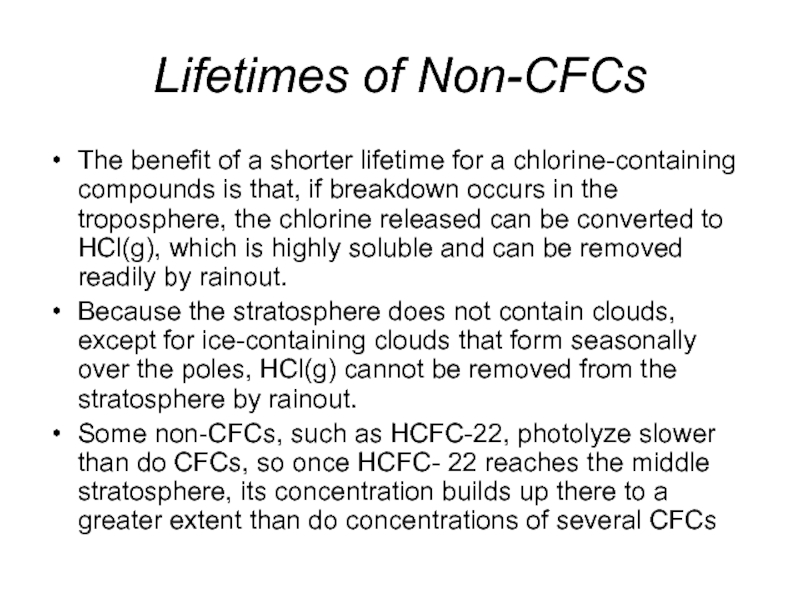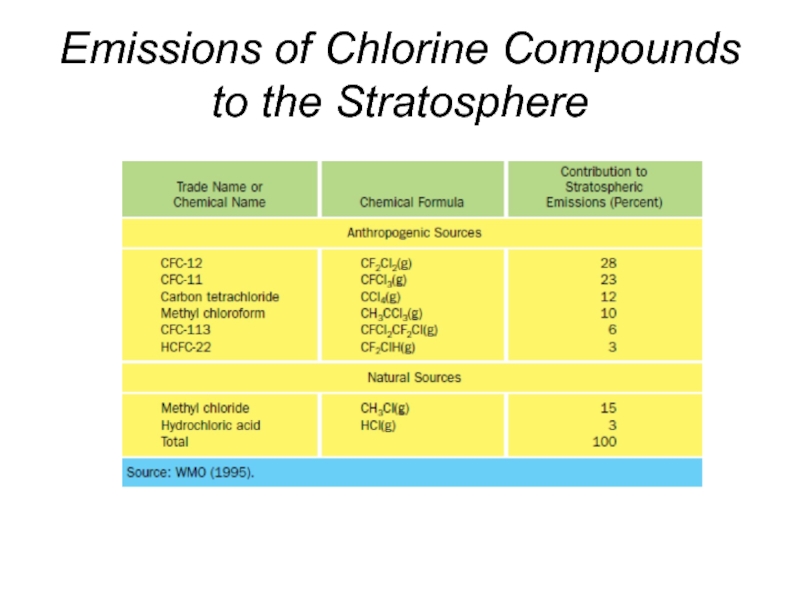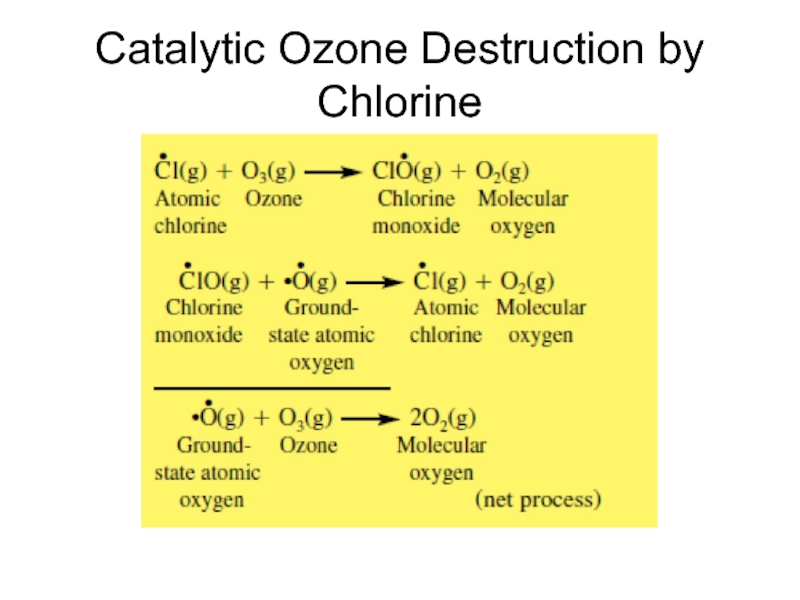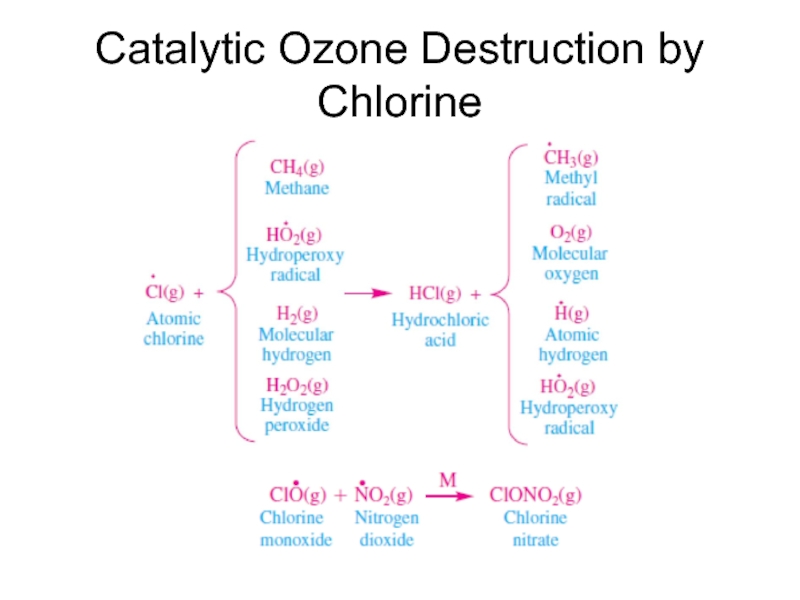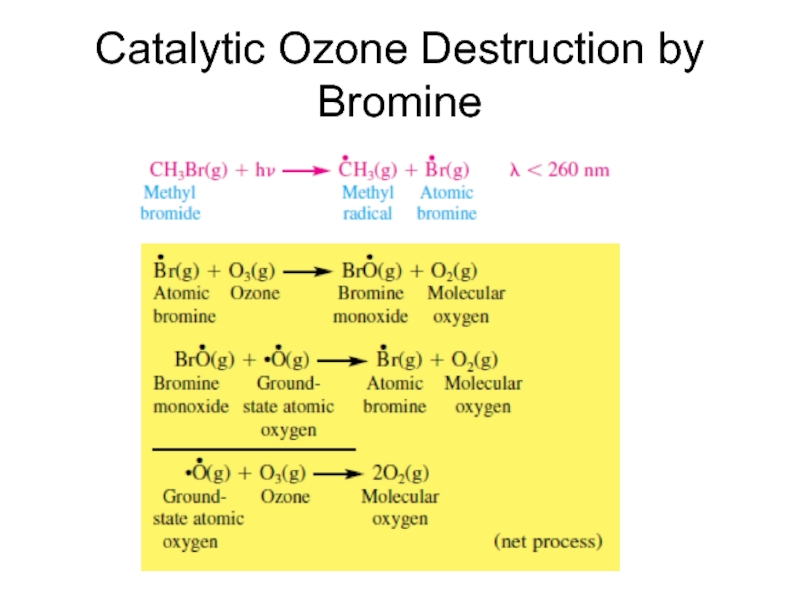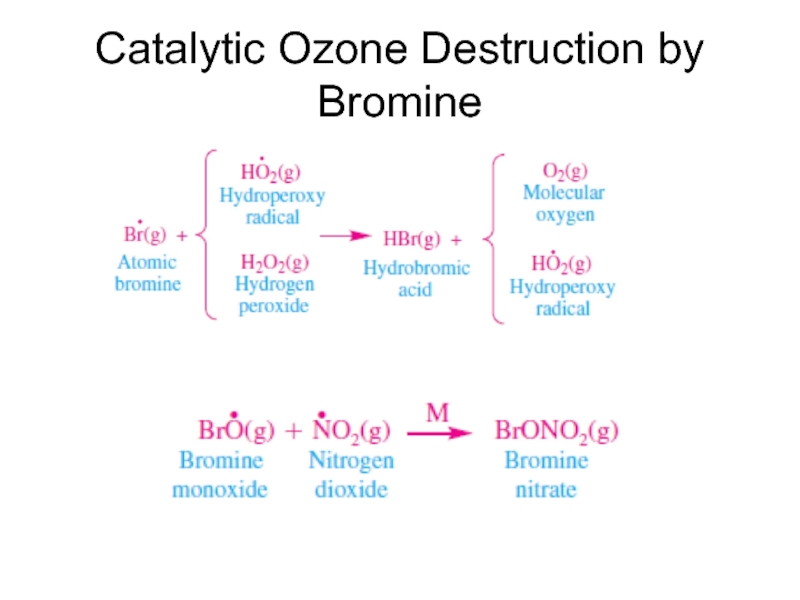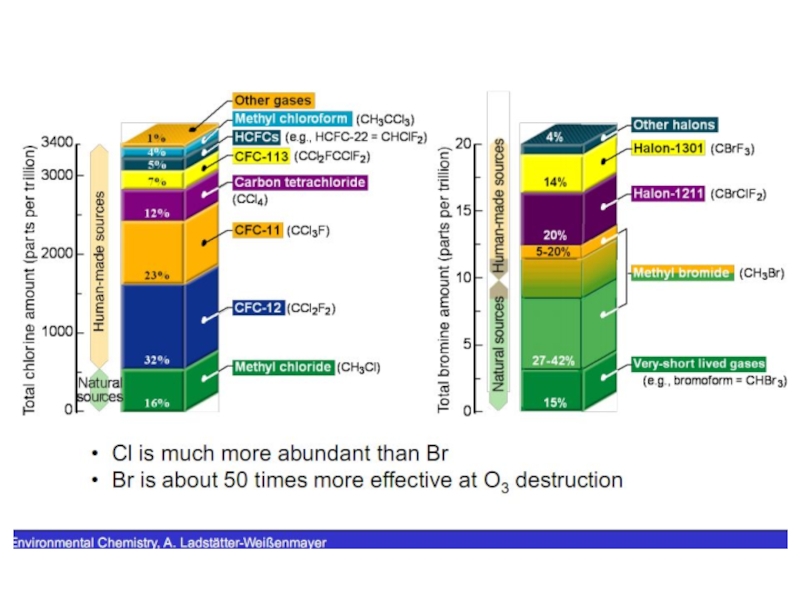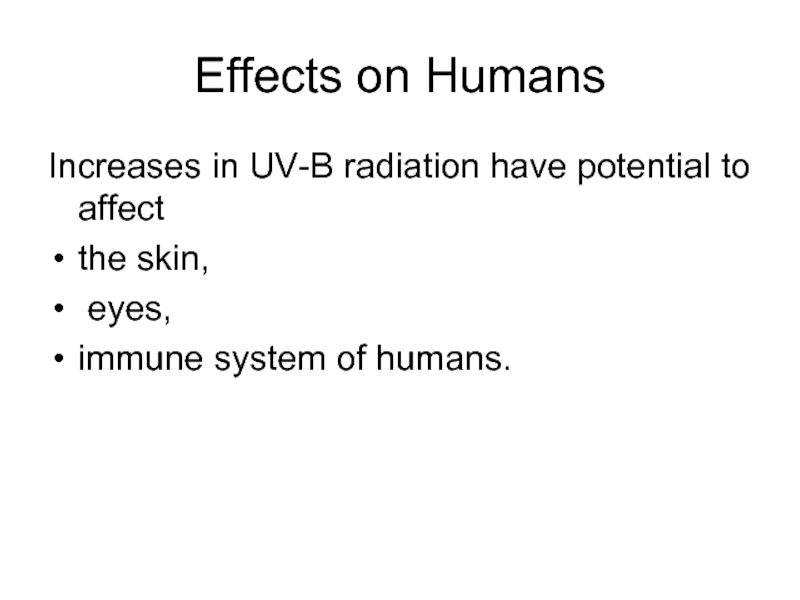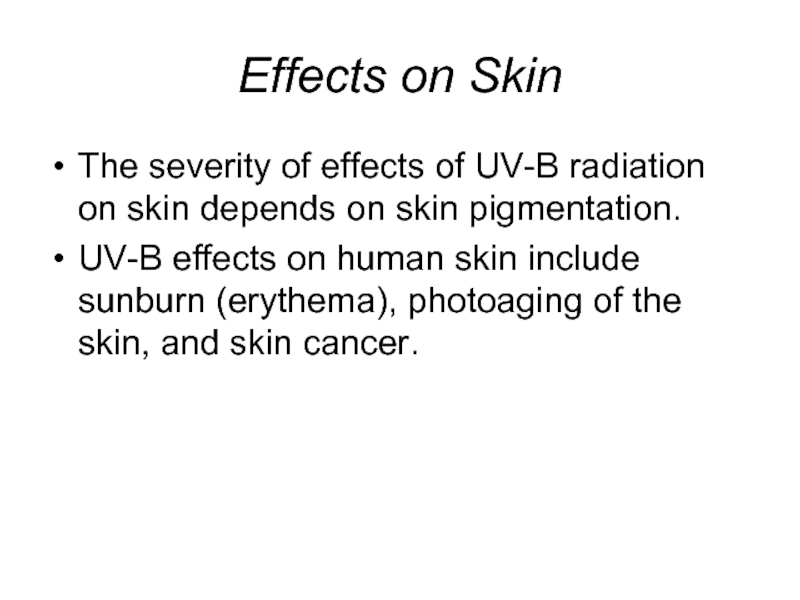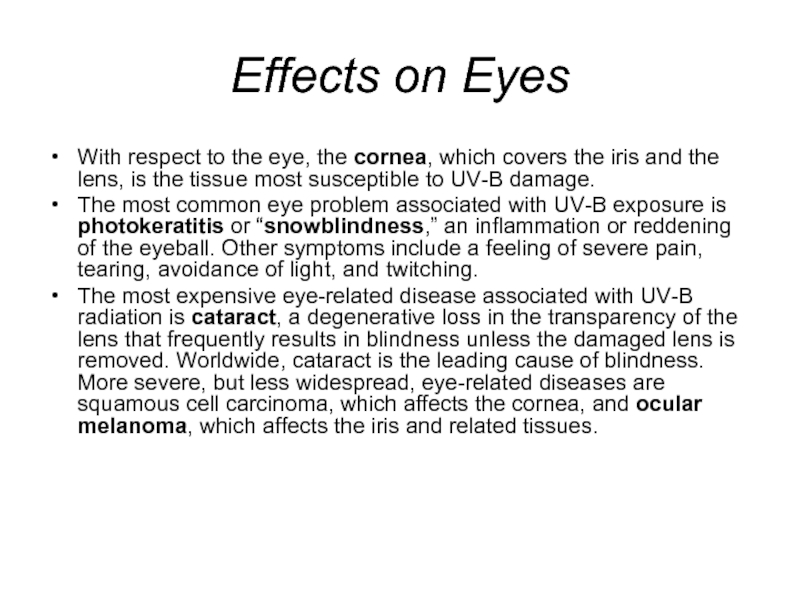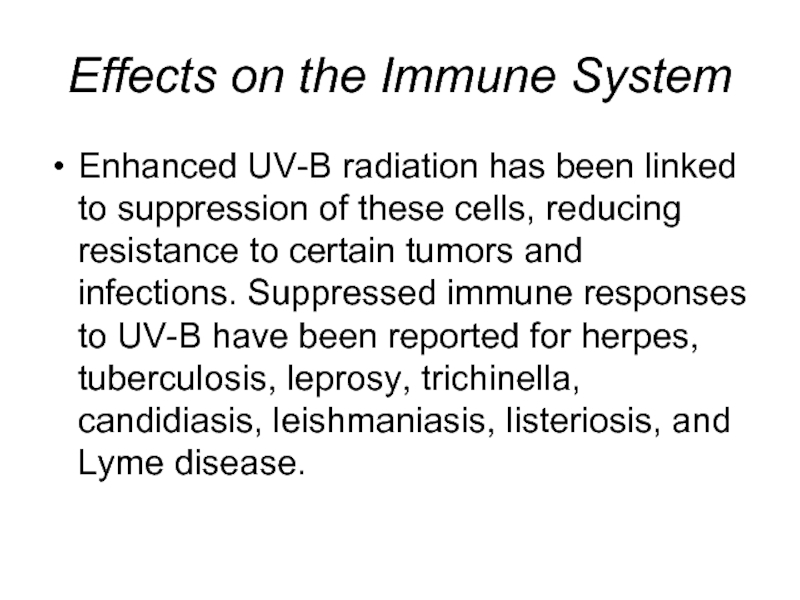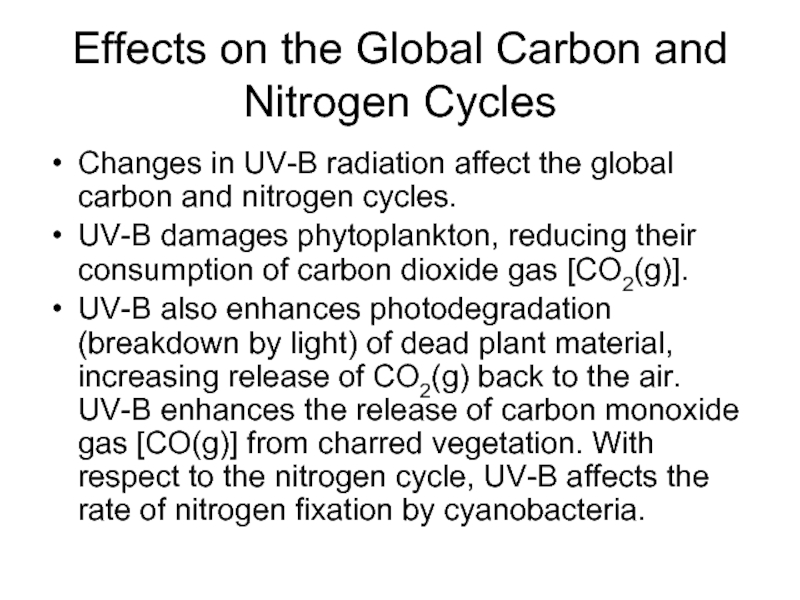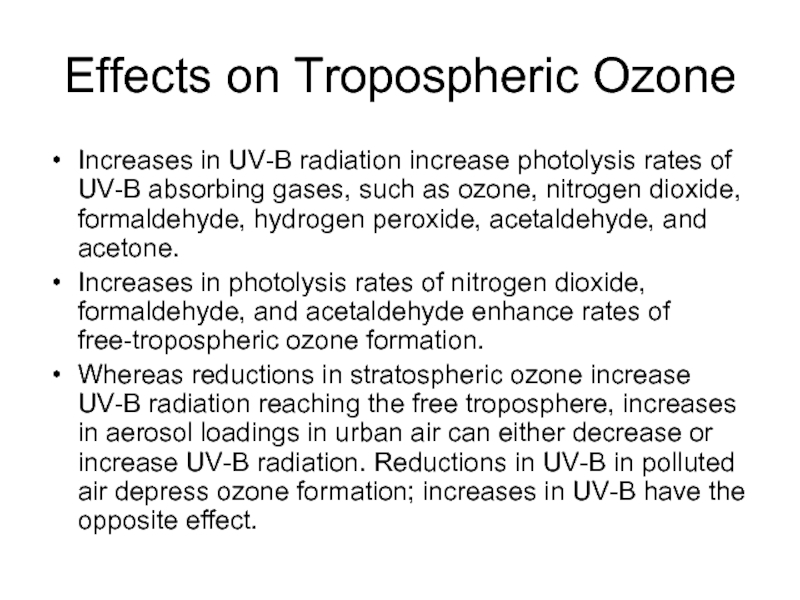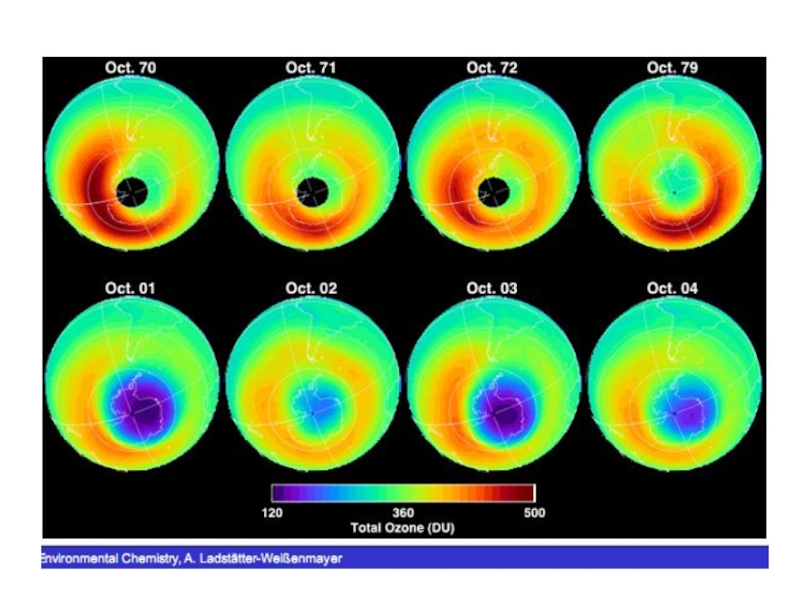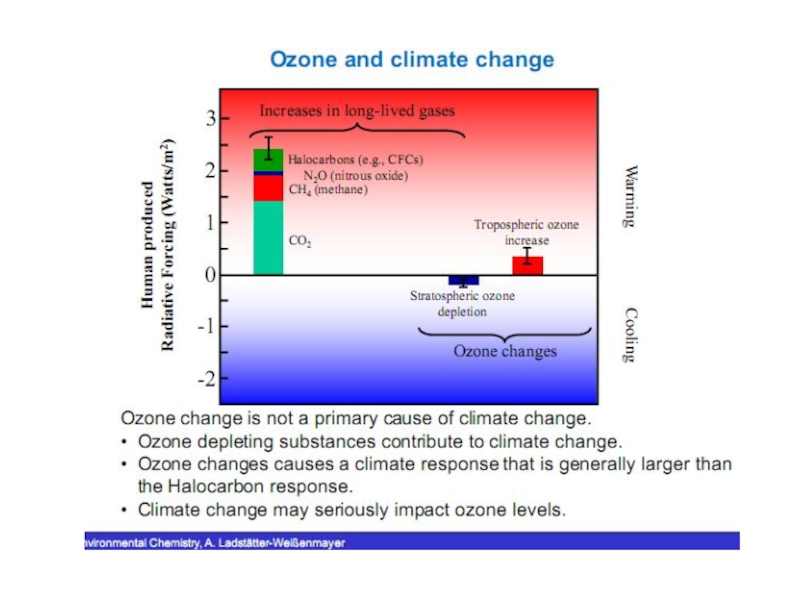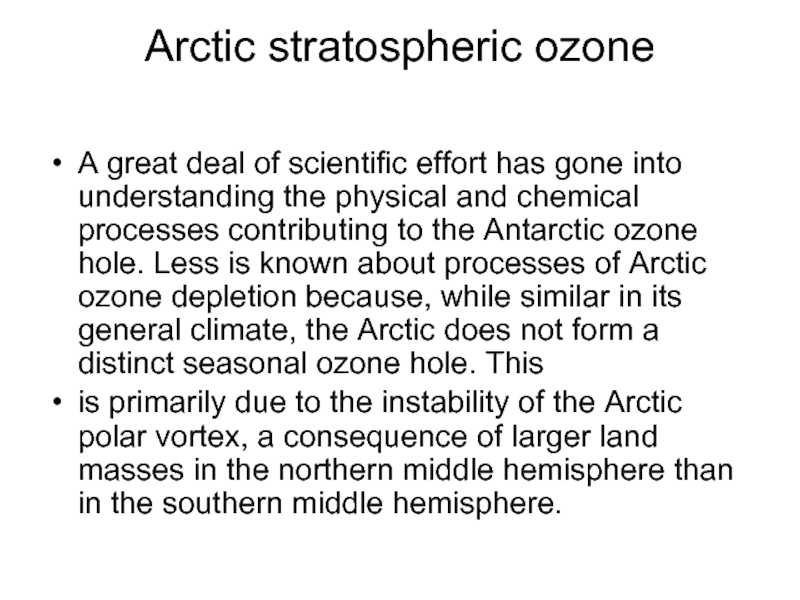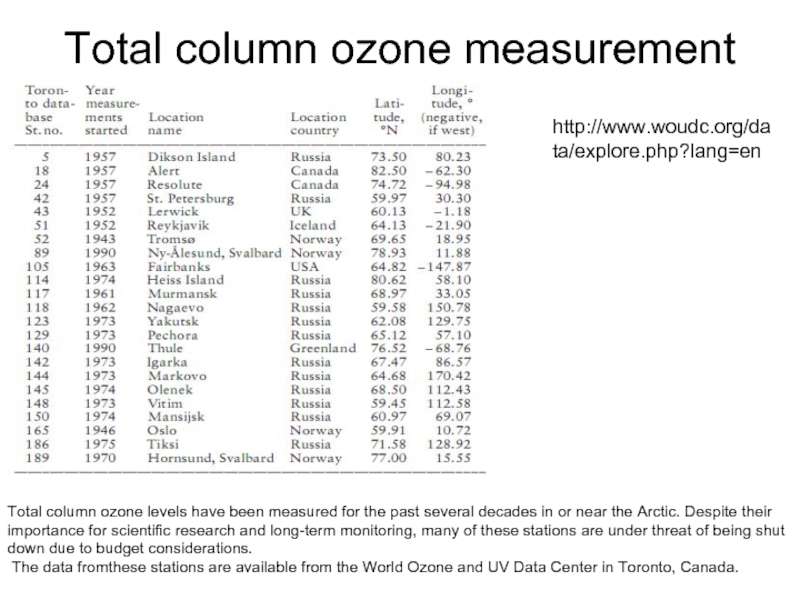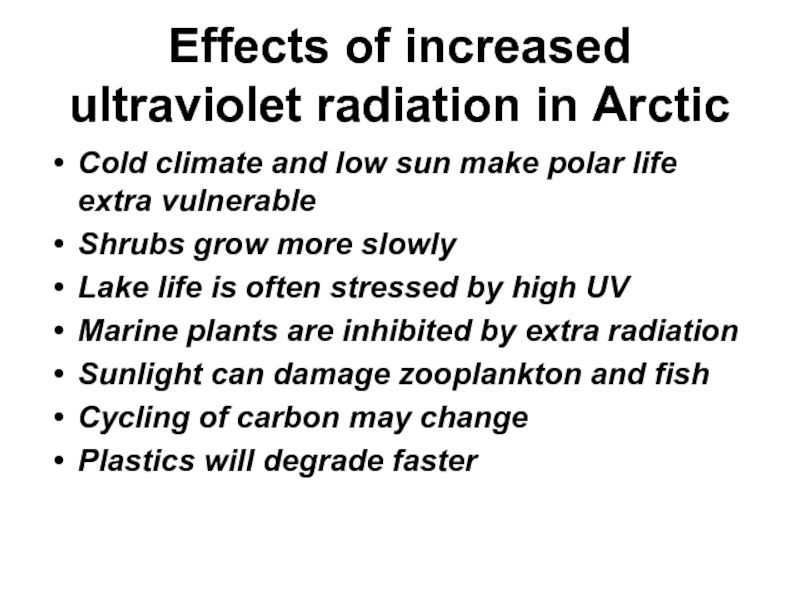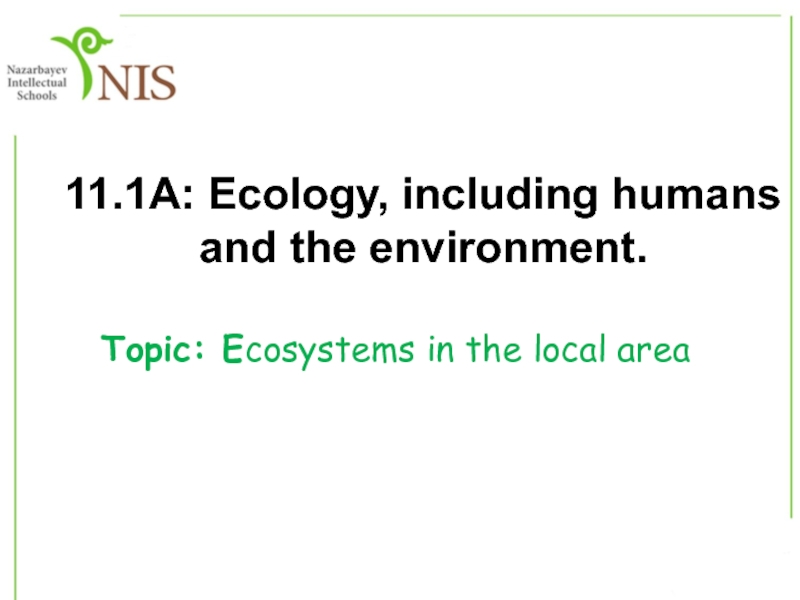- Главная
- Разное
- Дизайн
- Бизнес и предпринимательство
- Аналитика
- Образование
- Развлечения
- Красота и здоровье
- Финансы
- Государство
- Путешествия
- Спорт
- Недвижимость
- Армия
- Графика
- Культурология
- Еда и кулинария
- Лингвистика
- Английский язык
- Астрономия
- Алгебра
- Биология
- География
- Детские презентации
- Информатика
- История
- Литература
- Маркетинг
- Математика
- Медицина
- Менеджмент
- Музыка
- МХК
- Немецкий язык
- ОБЖ
- Обществознание
- Окружающий мир
- Педагогика
- Русский язык
- Технология
- Физика
- Философия
- Химия
- Шаблоны, картинки для презентаций
- Экология
- Экономика
- Юриспруденция
Ozone depletion презентация
Содержание
- 1. Ozone depletion
- 2. Basic information The stratospheric ozone layer
- 4. Basic information A measure of the quantity
- 5. UV portion of the solar spectrum is divided into far- and near-UV wavelengths
- 7. The chemistry of the natural ozone layer
- 8. The chemistry of the natural ozone layer (Ozone forms by)
- 9. The chemistry of the natural ozone layer (ozone is also destroyed by)
- 10. Chapman cycle Sidney Chapman (1888–1970)
- 11. Chapman cycle
- 13. Effects of Nitrogen on the Natural Ozone
- 14. N2O(g) produces nitric oxide by
- 15. Nitric oxide naturally reduces ozone in the upper stratosphere by
- 16. Effects of Nitrogen on the Natural Ozone
- 17. Major loss processes are the formation of nitric acid and peroxynitric acid by the reactions
- 18. Effects of Hydrogen on the Natural Ozone Layer
- 19. Effects of Hydrogen on the Natural Ozone
- 20. The most effective ·HOx(g) cycle, which has
- 21. Effects of Hydrogen on the Natural Ozone Layer
- 22. Effects of Carbon on the Natural Ozone Layer (CO)
- 23. Effects of Carbon on the Natural Ozone Layer (CH4)
- 24. Changes on a Global Scale Between
- 25. CFCs and Related Compounds The compounds
- 26. CFCs and Related Compounds These compounds are
- 28. CFCs and Related Compounds CFC 11
- 29. Atmospheric lifetimes and ozone depletion potentials of selected ozone-depleting gases
- 30. Other Chlorine Compounds Hydrochlorofluorocarbons (HCFCs) are
- 31. Bromine Compounds The primary source of
- 32. Fluorine Compounds Compounds that contain hydrogen,
- 33. Lifetimes and Mixing Ratios of Chlorinated Compounds
- 34. Lifetimes of CFCs Because the stratosphere
- 35. Lifetimes of CFCs In sum, the limiting
- 36. Lifetimes of Non-CFCs Lifetimes of non-CFC
- 37. Lifetimes of Non-CFCs The benefit of a
- 38. Emissions of Chlorine Compounds to the Stratosphere
- 39. Catalytic Ozone Destruction by Chlorine
- 40. Catalytic Ozone Destruction by Chlorine
- 41. Catalytic Ozone Destruction by Bromine
- 42. Catalytic Ozone Destruction by Bromine
- 44. Effects on Humans Increases in UV-B
- 45. Effects on Skin The severity of
- 46. Effects on Eyes With respect to
- 47. Effects on the Immune System Enhanced UV-B
- 48. Effects on the Global Carbon and Nitrogen
- 49. Effects on Tropospheric Ozone Increases in
- 52. Arctic stratospheric ozone A great deal
- 53. Total column ozone measurement stations Total
- 54. Effects of increased ultraviolet radiation in Arctic
Слайд 2Basic information
The stratospheric ozone layer began to form soon after the
Absorption of ultraviolet (UV) radiation by ozone is responsible for the temperature inversion that defines the present day stratosphere.
This absorption is critical for preventing UV radiation from reaching the surface of the Earth, where it can harm life.
Слайд 4Basic information
A measure of the quantity of ozone in the air
Thus, 1 DU is equivalent to 2.7 * 1016 molecules of ozone per square centimeter of surface.
In 2000, the globally averaged column abundance of ozone from 90°S to 90°N was 293.4 DU. This column abundance contains the same number of molecules as a column of air 2.93-mm high at 1 atm of pressure and 273 K (near-surface conditions).
Слайд 13Effects of Nitrogen on the Natural Ozone Layer
Oxides of nitrogen
In the troposphere, the major sources of nitric oxide (NO) are surface emissions and lightning.
The major source of NO(g) in the stratosphere is transport from the troposphere and the breakdown of nitrous oxide [N2O(g)] (laughing gas), a colorless gas emitted during denitrification by anaerobic bacteria in soils. It is also emitted by bacteria in fertilizers, sewage, and the oceans and during biomass burning, automobile combustion, aircraft combustion, nylon manufacturing, and the use of spray cans.
Слайд 16Effects of Nitrogen on the Natural Ozone Layer
This sequence is called
This particular cycle is the NOx(g) catalytic ozone destruction cycle, where NOx(g): NO(g) NO2(g), and NO(g) is the catalyst.
The number of times the cycle is executed before NOx(g) is removed from the cycle by reaction with another gas is the chain length. In the upper stratosphere, the chain length of this cycle is about 105. Thus, 105 molecules of O3(g) are destroyed before one NOx(g) molecule is removed from the cycle.
In the lower stratosphere, the chain length decreases to near 10.
Слайд 17Major loss processes are the formation of nitric acid and peroxynitric
Слайд 19Effects of Hydrogen on the Natural Ozone Layer
The hydroxyl radical participates
·HO2(g). ·HOx(g) catalytic cycles are important in the lower stratosphere.
Слайд 20The most effective ·HOx(g) cycle, which has a chain length in
Слайд 24Changes on a Global Scale
Between 1979 and 2000, the global
Unusual decreases in global ozone occurred following the El Chichуn (Mexico) volcanic eruption in April 1982, and the Mount Pinatubo (Philippines) eruption in June 1991.
These eruption injected particles into the stratosphere. On the surfaces of these particles, chemical reactions involving chlorine took place that contributed to ozone loss. Over time, however, the concentration of these particles decreased, and the global ozone layer partially recovered. Because volcanic particles were responsible for only temporarily ozone losses, the net loss of ozone over the globe from 1979 to 2000 was still about 3.5 percent. The decrease between 60°S and 60°N was 2.5 percent (298.08 to 290.68 DU), that between 60°N and 90°N was 7.0 percent (370.35 to 344.29 DU), and that between 60°S and 90°S was 14.3 percent (335.20 to 287.23 DU).
Слайд 25CFCs and Related Compounds
The compounds that play the most important
CFCs are gases formed synthetically by replacing all hydrogen atoms in methane [CH4(g)] or ethane [C2H6(g)] with chlorine and/or fluorine atoms.
They are also commonly known by the DuPont brand name Freon.
Many CFCs have been widely used as refrigerants, propellants (in aerosol applications), and solvents.
Слайд 26CFCs and Related Compounds
These compounds are non-flammable, tasteless and odourless, and
Their other important property is their volatility, having boiling points close to zero degrees Centigrade.
These physical properties make them ideal for use as refrigerant gases in air conditioners, freezers and refrigerators. Their low boiling points also make them ideal for blowing agents for foam plastics, allowing the foam to expand as the liquid CFC boils.
Слайд 30Other Chlorine Compounds
Hydrochlorofluorocarbons (HCFCs) are another subset of chlorocarbons. The
Other chlorocarbons include carbon tetrachloride [CCl4(g)], methyl chloroform [CH3CCl3(g)], and methyl chloride [CH3Cl(g)]. Carbon tetrachloride is used as an intermediate in the production of CFCs and HCFCs and as a solvent and grain fumigant.
Another chlorine-containing gas in the troposphere is hydrochloric acid [HCl(g)]. HCl(g) has larger natural than anthropogenic sources. Natural sources include evaporation of chloride from sea-spray and volcanic emissions.
Слайд 31Bromine Compounds
The primary source of stratospheric bromine is methyl bromide
Other sources of bromine are a group of synthetically produced compounds termed Halons, which are used in fire extinguishers and as fumigants. The most common Halons are H-1301 [CF3Br(g)], H-1211 [CF2ClBr(g)], and H-2402 [CF2BrCF2Br(g)]. Methyl bromide and Halons are bromocarbons because they contain both bromine and carbon.
Слайд 32Fluorine Compounds
Compounds that contain hydrogen, fluorine, and carbon but not
Unfortunately, because they absorb thermal-IR radiation, HFCs will enhance global warming if their use increases. The most abundantly emitted HFC to date has been HFC-134a [CH2FCF3(g)]. Related to HFCs are perfluorcarbons (PFCs), such as perfluoroethane [C2F6(g)], and sulfur hexafluoride [SF6(g)].
Слайд 33Lifetimes and Mixing Ratios of Chlorinated Compounds
Once emitted, CFCs take
Variation of CFC-11, CFC-12,
HCFC-22, and CCl4(g) with altitude at 30ºN latitude. Smoothed and scaled from Jackman et al. (1996) to present-day near surface mixing ratios.
Слайд 34Lifetimes of CFCs
Because the stratosphere is one large temperature inversion,
Слайд 35Lifetimes of CFCs
In sum, the limiting factor in CFC decomposition in
Слайд 36Lifetimes of Non-CFCs
Lifetimes of non-CFC chlorinated compounds are often shorter
The lifetimes of CCl4(g) between emission and chemical destruction is about 35 years,
HCFC-22(g) – 12 years ,
CH3CCl3(g) – 5 years,
CH3Cl(g) – 1.3 years,
HCl(g) less than 0.1 year.
Non-CFCs generally have shorter lifetimes than do CFCs because they react faster with ·OH(g) than do CFCs and are often more water soluble than are CFCs.
Слайд 37Lifetimes of Non-CFCs
The benefit of a shorter lifetime for a chlorine-containing
Because the stratosphere does not contain clouds, except for ice-containing clouds that form seasonally over the poles, HCl(g) cannot be removed from the stratosphere by rainout.
Some non-CFCs, such as HCFC-22, photolyze slower than do CFCs, so once HCFC- 22 reaches the middle stratosphere, its concentration builds up there to a greater extent than do concentrations of several CFCs
Слайд 44Effects on Humans
Increases in UV-B radiation have potential to affect
the skin,
eyes,
immune system of humans.
Слайд 45Effects on Skin
The severity of effects of UV-B radiation on
UV-B effects on human skin include sunburn (erythema), photoaging of the skin, and skin cancer.
Слайд 46Effects on Eyes
With respect to the eye, the cornea, which
The most common eye problem associated with UV-B exposure is photokeratitis or “snowblindness,” an inflammation or reddening of the eyeball. Other symptoms include a feeling of severe pain, tearing, avoidance of light, and twitching.
The most expensive eye-related disease associated with UV-B radiation is cataract, a degenerative loss in the transparency of the lens that frequently results in blindness unless the damaged lens is removed. Worldwide, cataract is the leading cause of blindness. More severe, but less widespread, eye-related diseases are squamous cell carcinoma, which affects the cornea, and ocular melanoma, which affects the iris and related tissues.
Слайд 47Effects on the Immune System
Enhanced UV-B radiation has been linked to
Слайд 48Effects on the Global Carbon and Nitrogen Cycles
Changes in UV-B
UV-B damages phytoplankton, reducing their consumption of carbon dioxide gas [CO2(g)].
UV-B also enhances photodegradation (breakdown by light) of dead plant material, increasing release of CO2(g) back to the air. UV-B enhances the release of carbon monoxide gas [CO(g)] from charred vegetation. With respect to the nitrogen cycle, UV-B affects the rate of nitrogen fixation by cyanobacteria.
Слайд 49Effects on Tropospheric Ozone
Increases in UV-B radiation increase photolysis rates
Increases in photolysis rates of nitrogen dioxide, formaldehyde, and acetaldehyde enhance rates of free-tropospheric ozone formation.
Whereas reductions in stratospheric ozone increase UV-B radiation reaching the free troposphere, increases in aerosol loadings in urban air can either decrease or increase UV-B radiation. Reductions in UV-B in polluted air depress ozone formation; increases in UV-B have the opposite effect.
Слайд 52Arctic stratospheric ozone
A great deal of scientific effort has gone into
is primarily due to the instability of the Arctic polar vortex, a consequence of larger land masses in the northern middle hemisphere than in the southern middle hemisphere.
Слайд 53Total column ozone measurement stations
Total column ozone levels have been
The data fromthese stations are available from the World Ozone and UV Data Center in Toronto, Canada.
http://www.woudc.org/data/explore.php?lang=en
Слайд 54Effects of increased
ultraviolet radiation in Arctic
Cold climate and low sun make
Shrubs grow more slowly
Lake life is often stressed by high UV
Marine plants are inhibited by extra radiation
Sunlight can damage zooplankton and fish
Cycling of carbon may change
Plastics will degrade faster
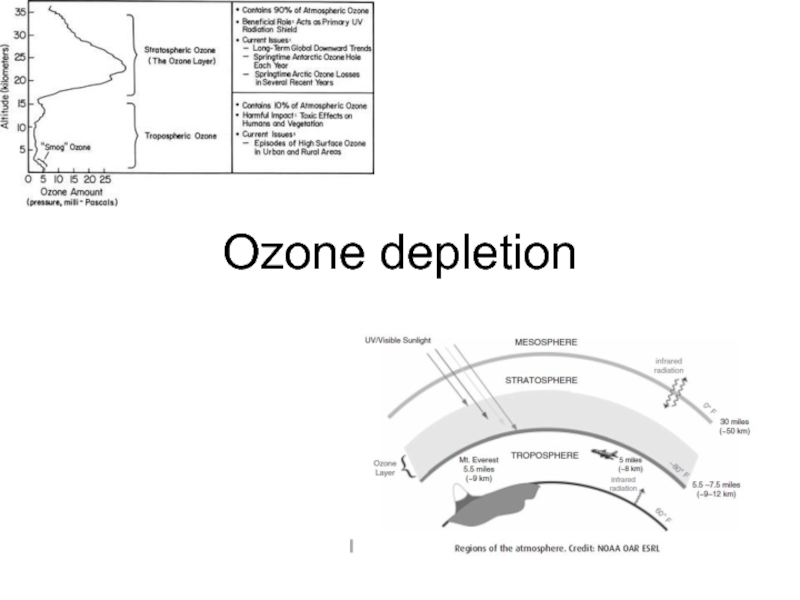
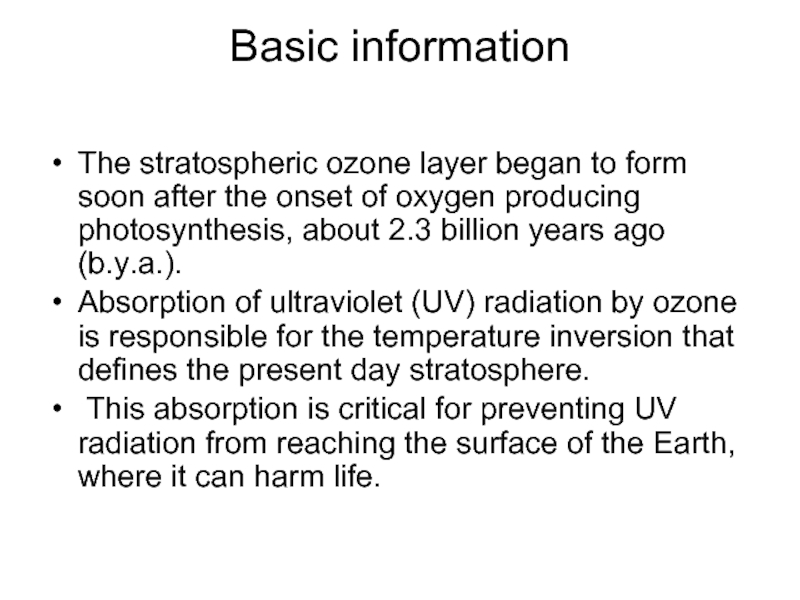
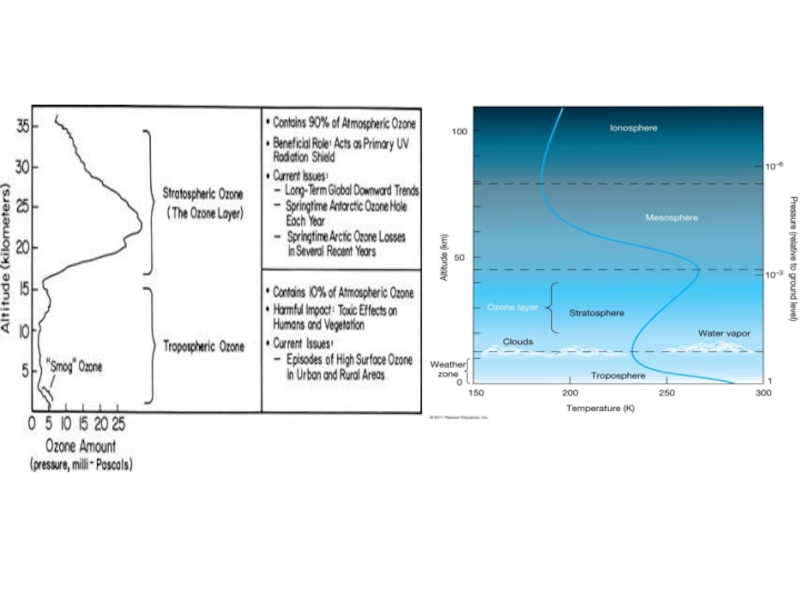
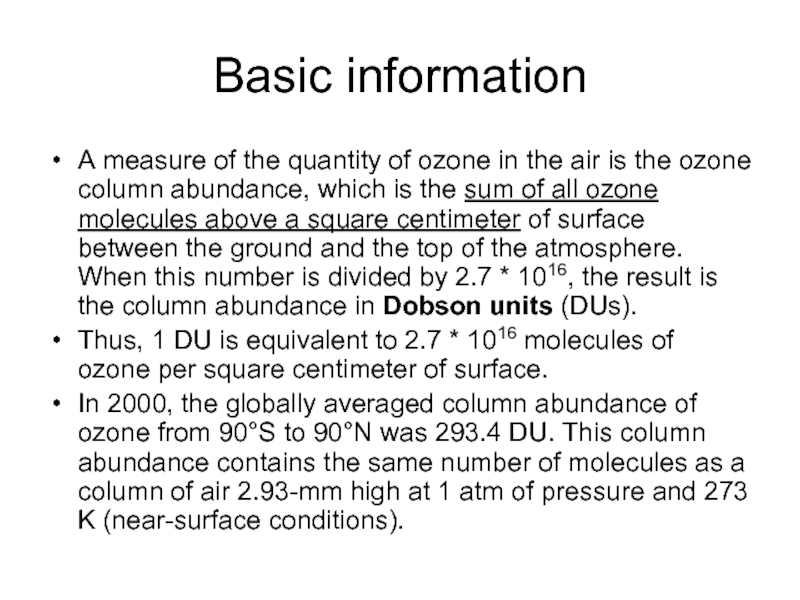
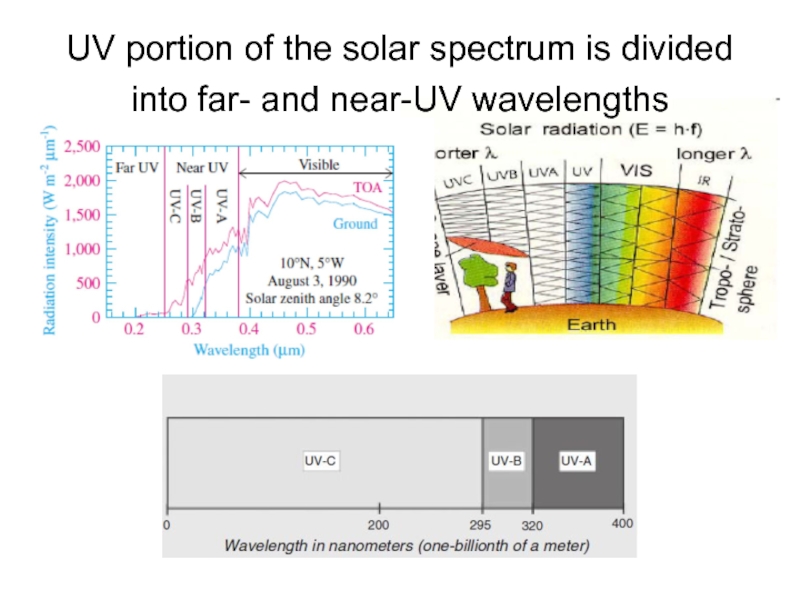
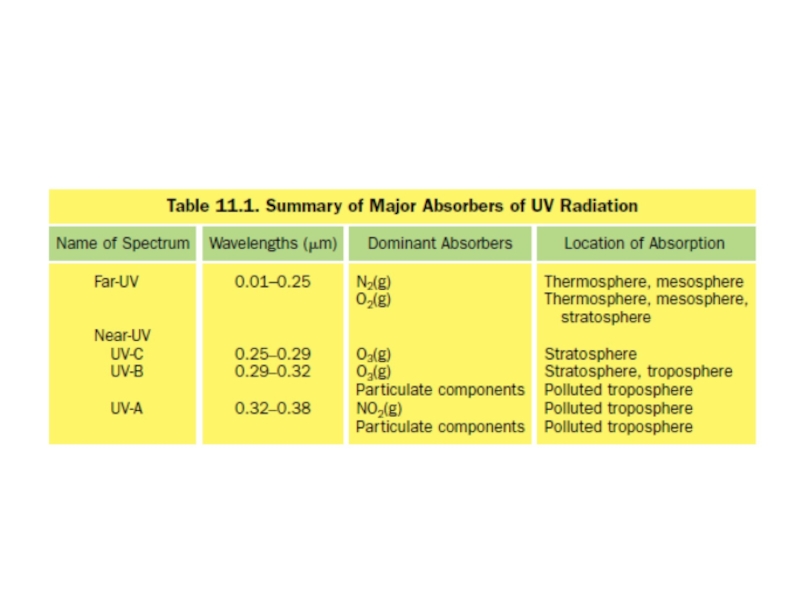
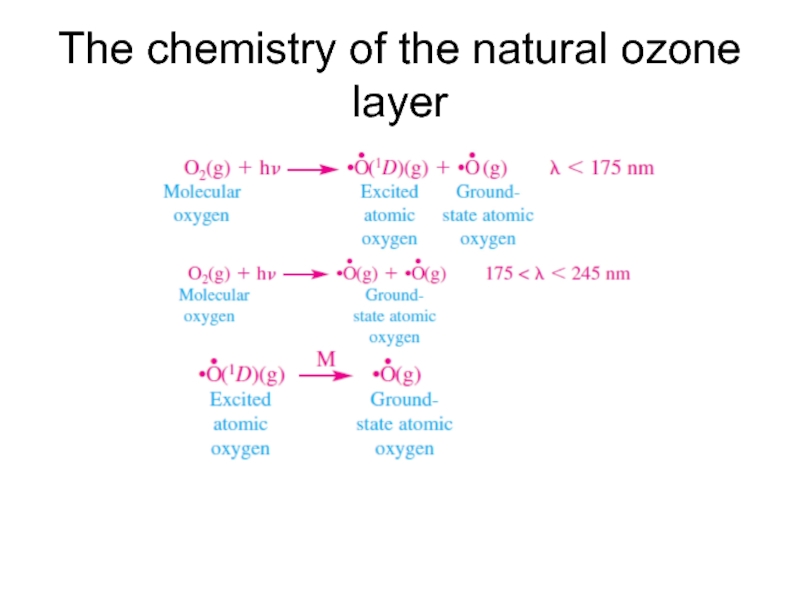
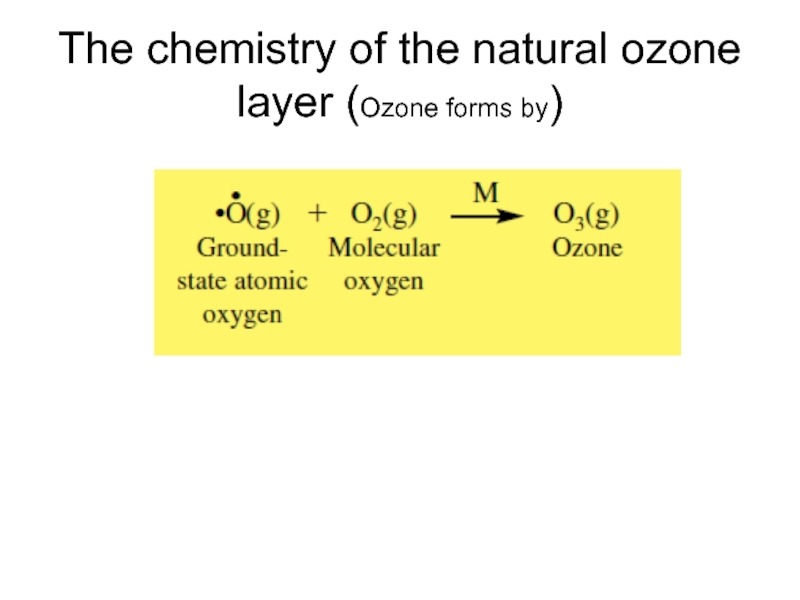
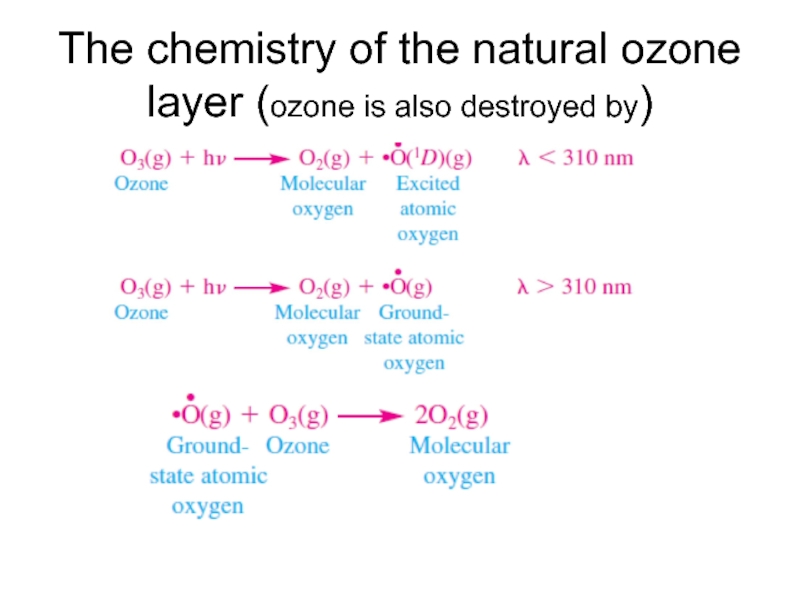
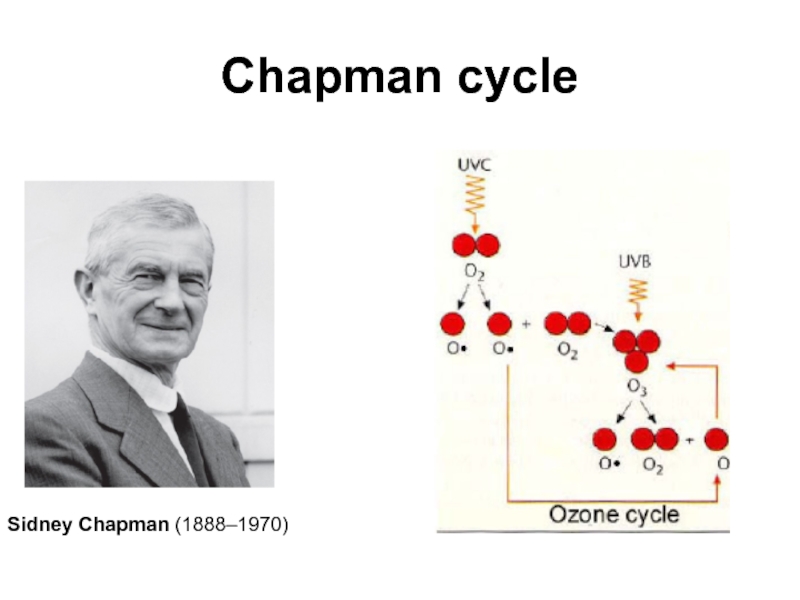
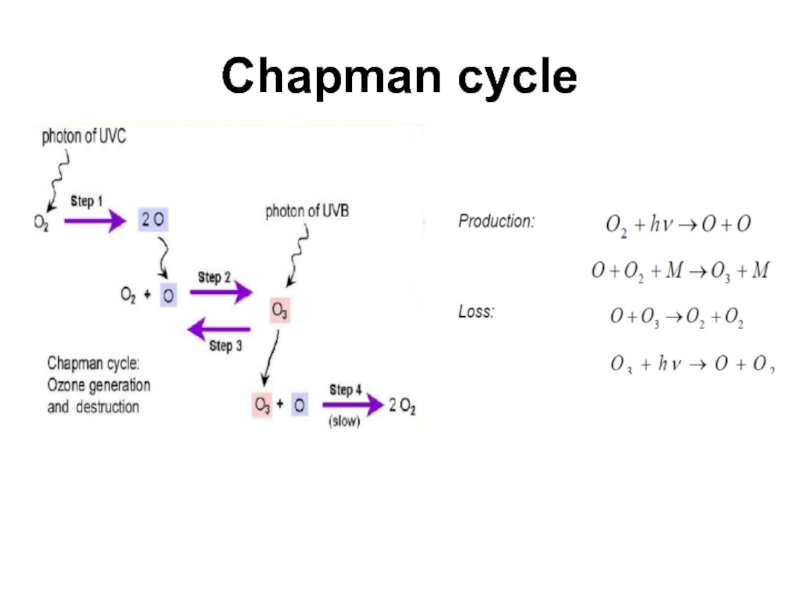
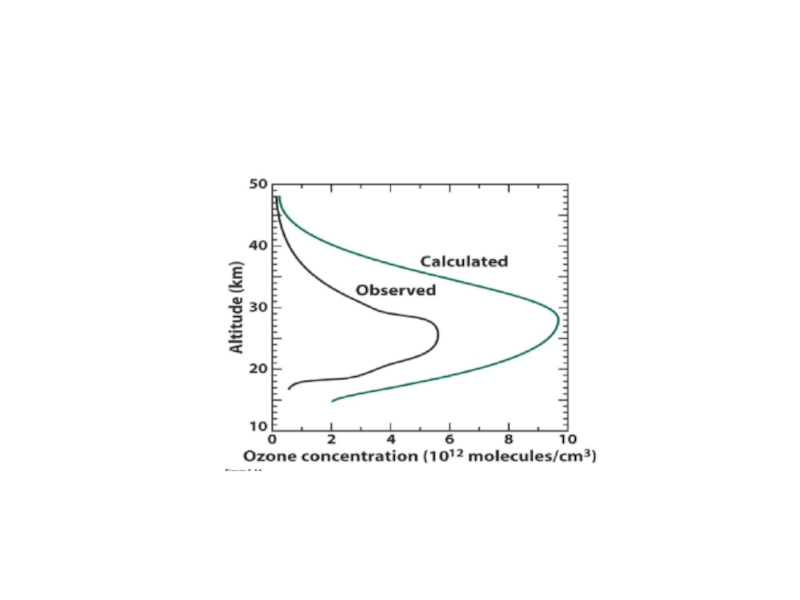
![Effects of Nitrogen on the Natural Ozone Layer Oxides of nitrogen [NO(g) and NO2(g)] naturally](/img/tmb/1/53561/2f739af01e566572c2f90973e8cdf7e8-800x.jpg)
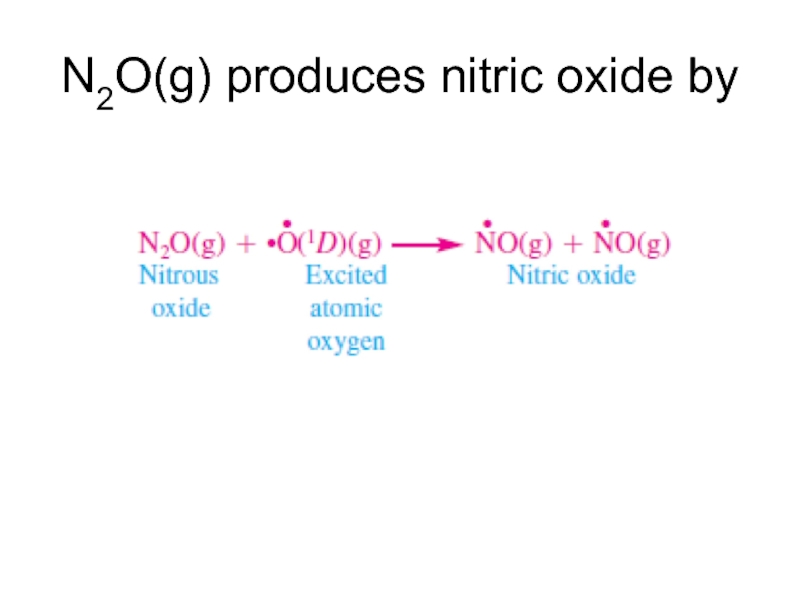
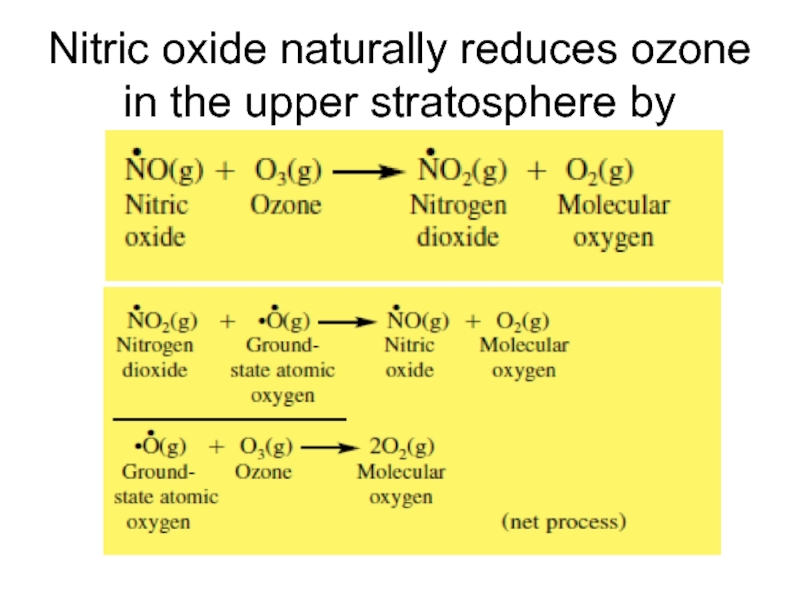
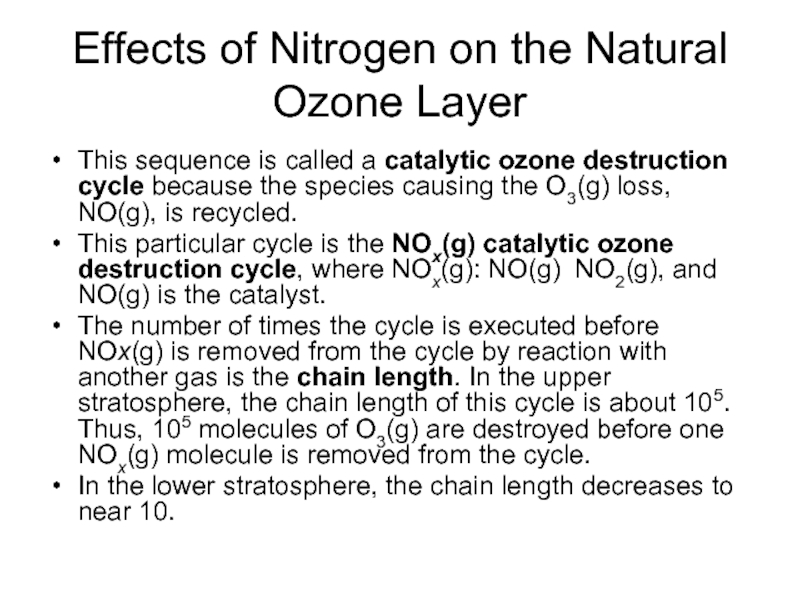
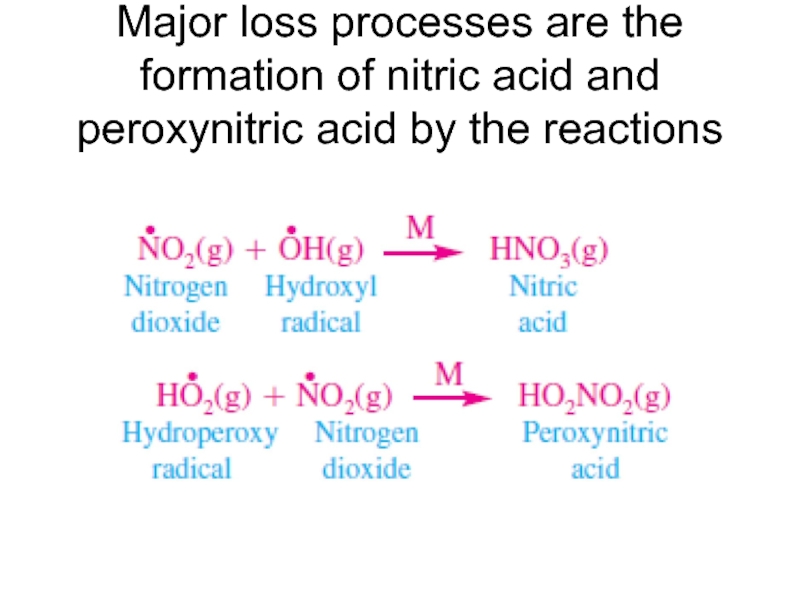
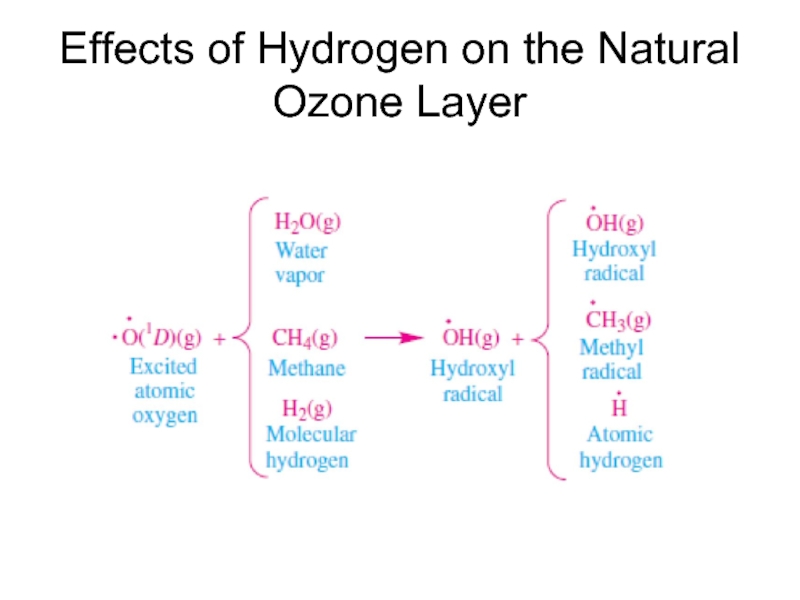
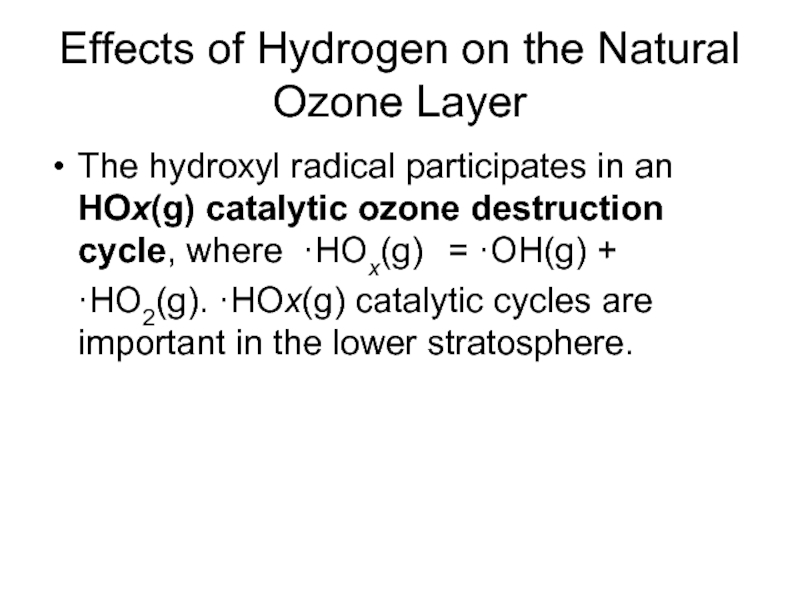
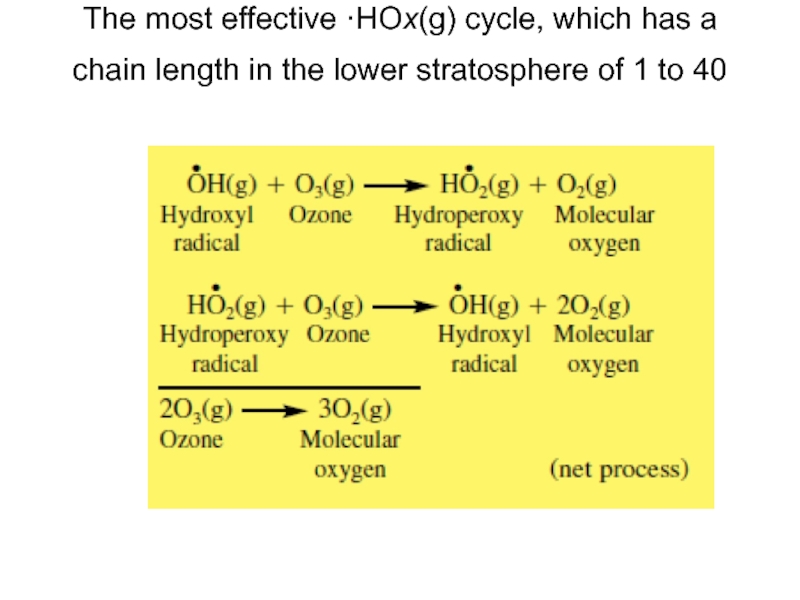
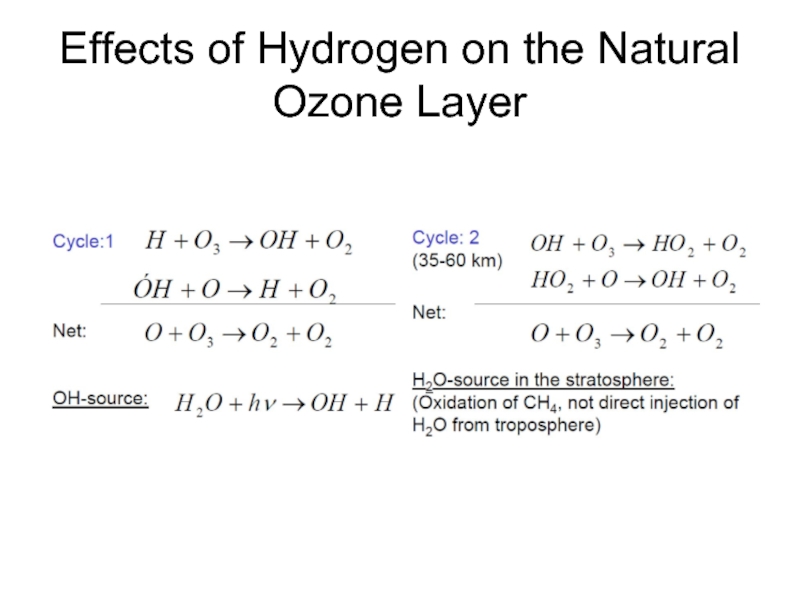
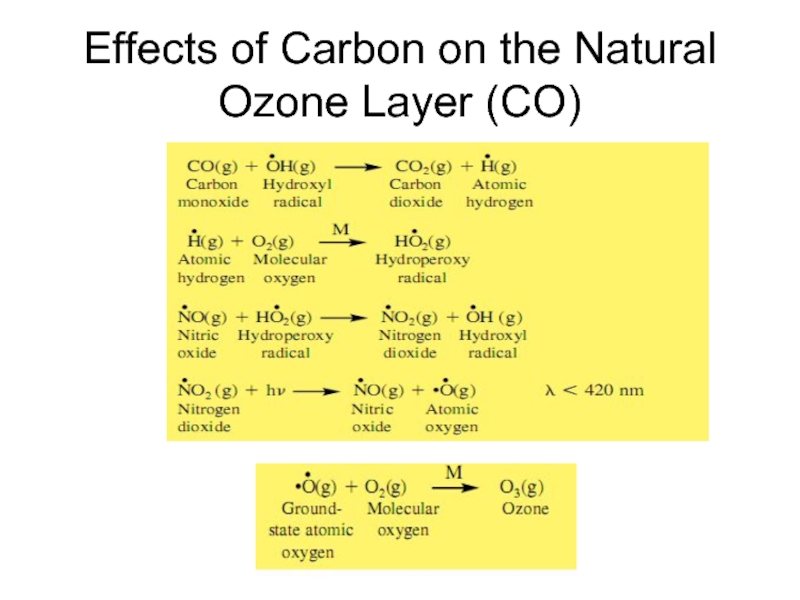
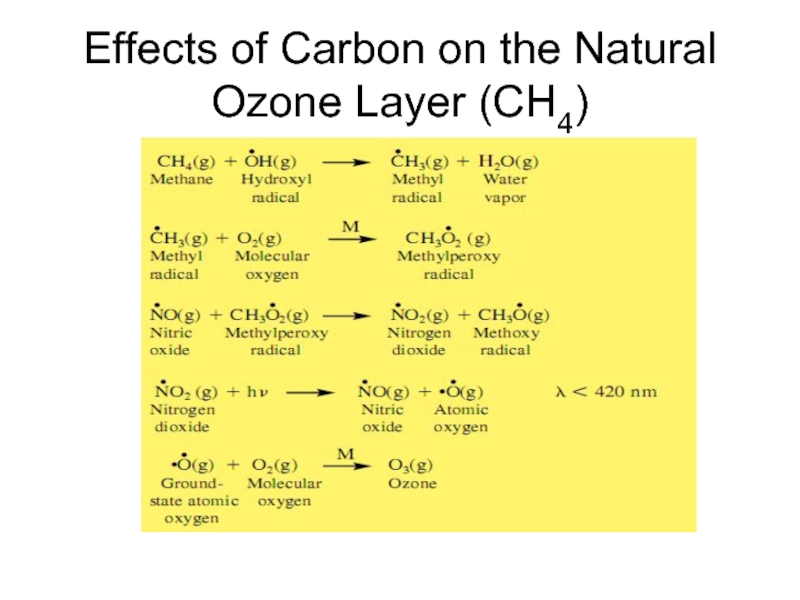
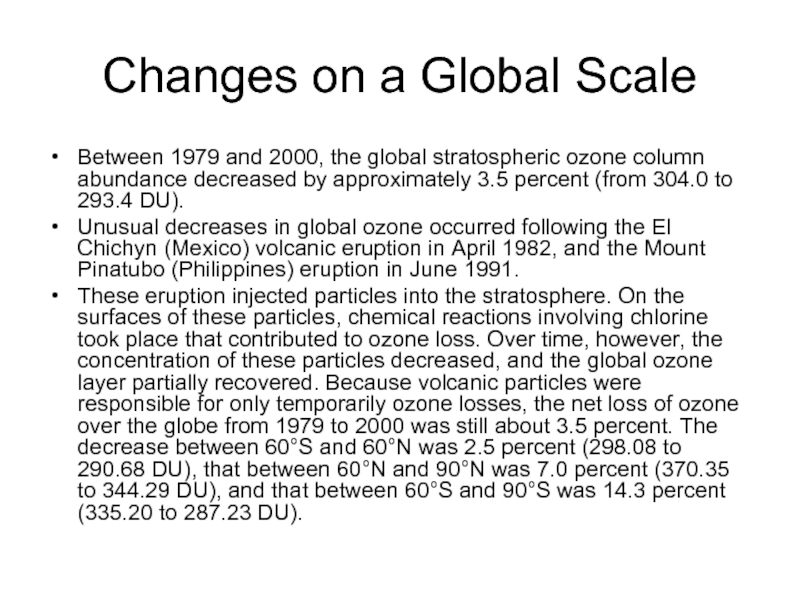
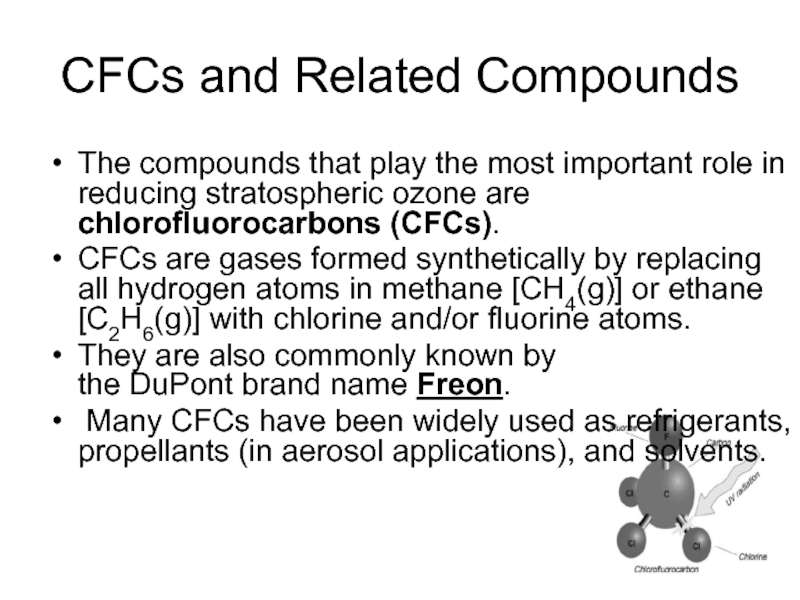
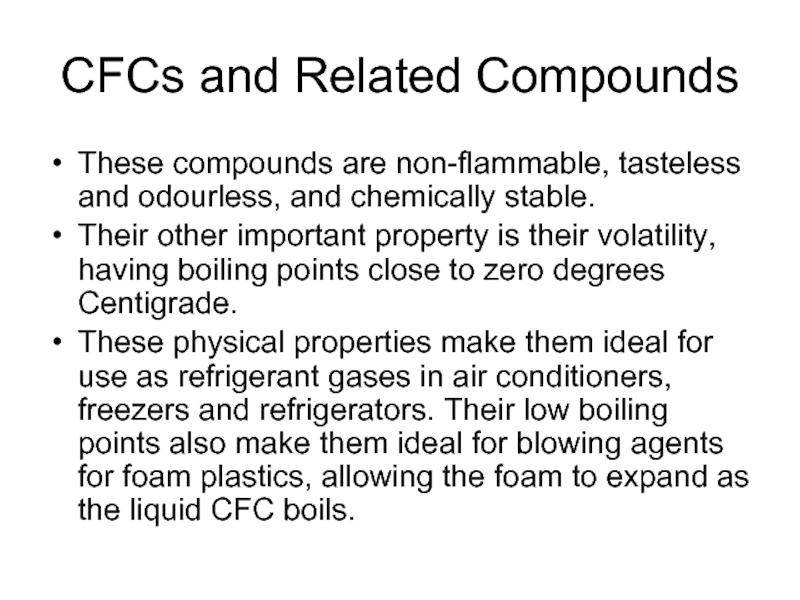
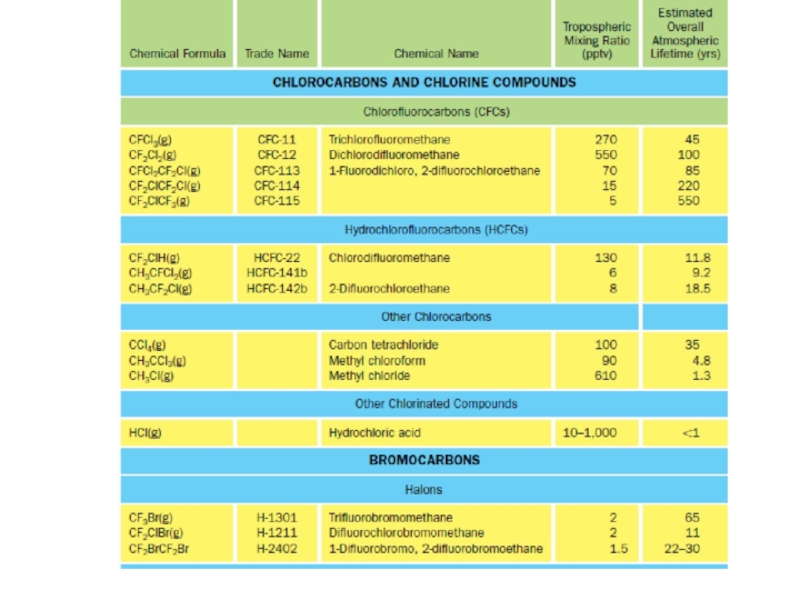
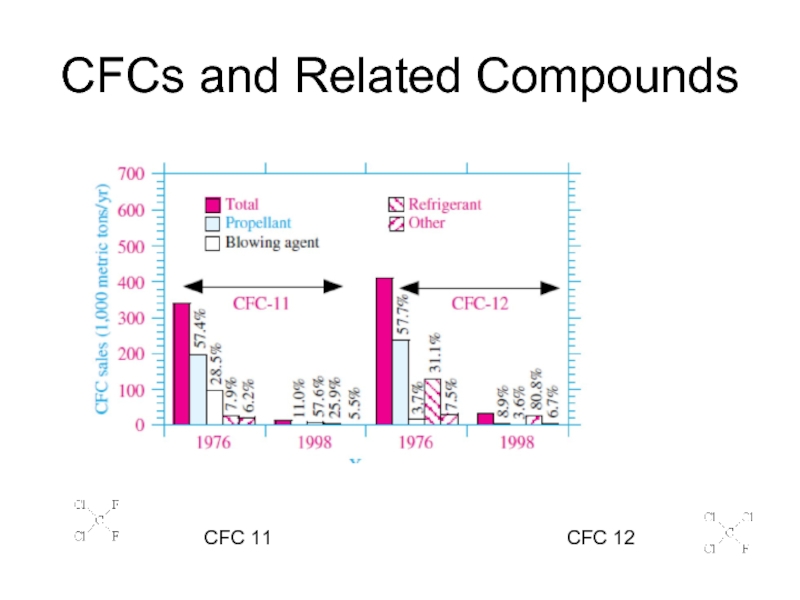
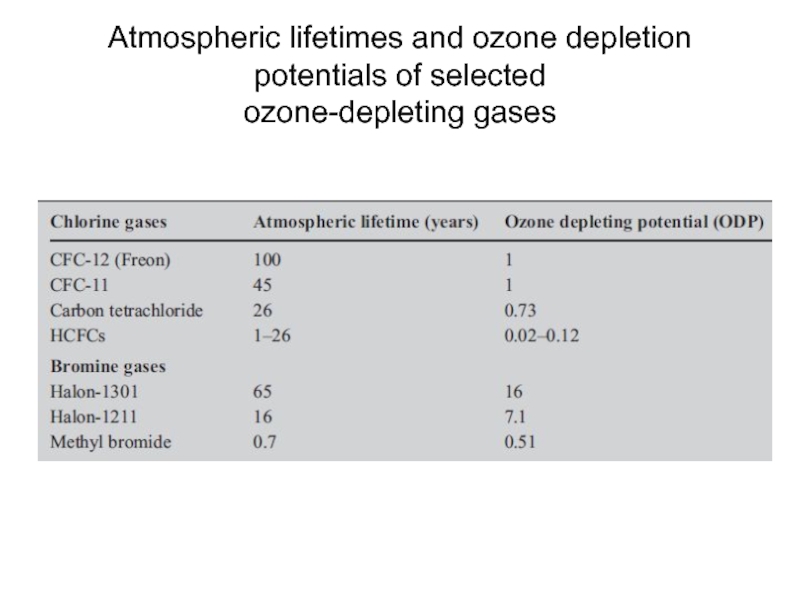
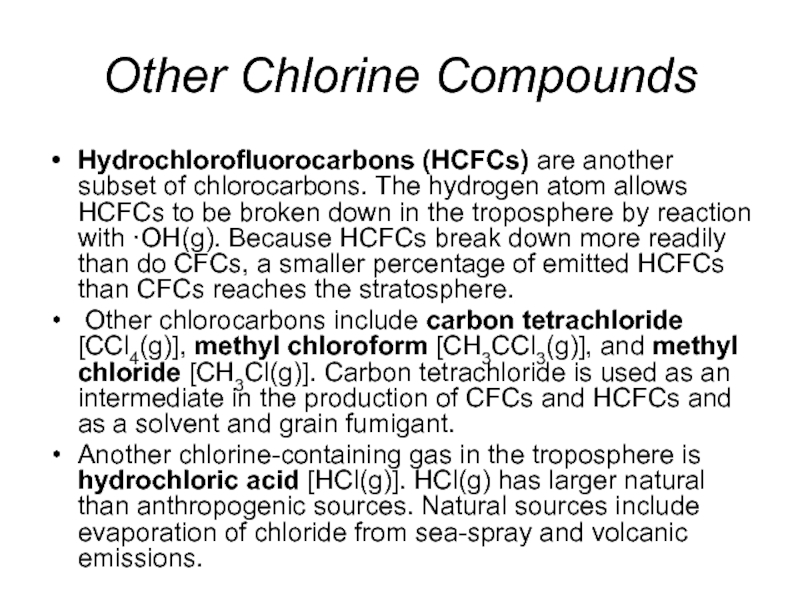
![Bromine Compounds The primary source of stratospheric bromine is methyl bromide [CH3Br(g)], which is produced](/img/tmb/1/53561/f62d489683ad99ad13cda0421ea1c81d-800x.jpg)
